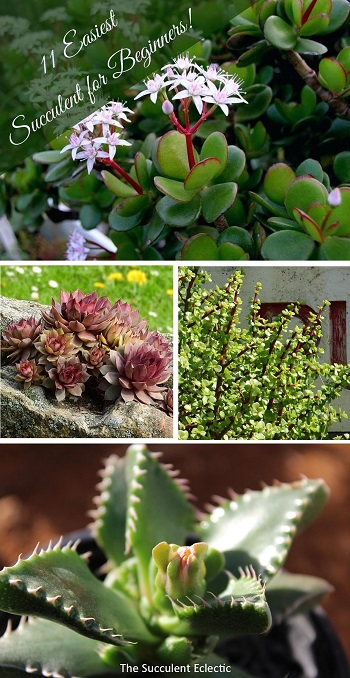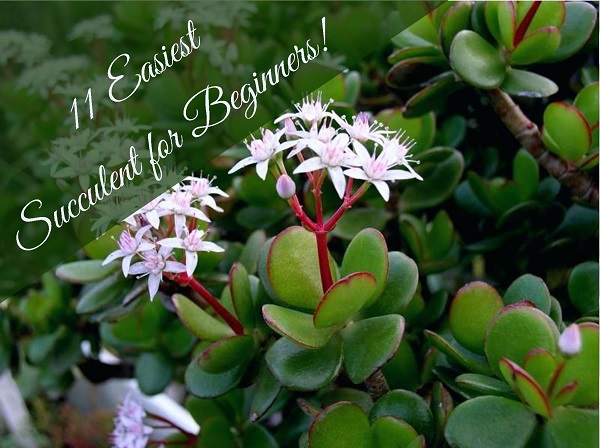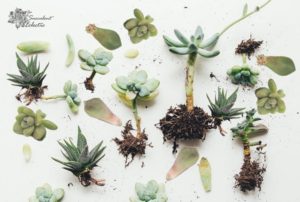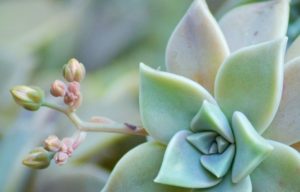Are you ready to grow your very first succulent? Yay you! Start here — this list of easy succulents to grow was created just for you! Or have you been growing succulents for a while and wonder why anyone ever said succulents are easy? You, too, are in the right place. Succulent care is quite different than that for most plants. This can make them challenging — especially for experienced gardeners. And some varieties can be tricky to please (Senecio ‘String of Pearls’ and Echeveria ‘Black Prince’, I’m looking at you!) To make this list of easy succulents for beginners, each variety had to be tolerant of mistakes and easy to care for in any climate. No special handling required. Did your favorite make the grade? Let’s find out!
Super Easy Succulents to Grow
In this Post We'll Cover:
{Please note, some links in this post may be affiliate links to sites that pay me a small commission if you click on the link and make a purchase. This commission is at absolutely no cost to you. I only recommend products and companies that I have worked with and truly love! ~Kat}
Succulent Care Basics
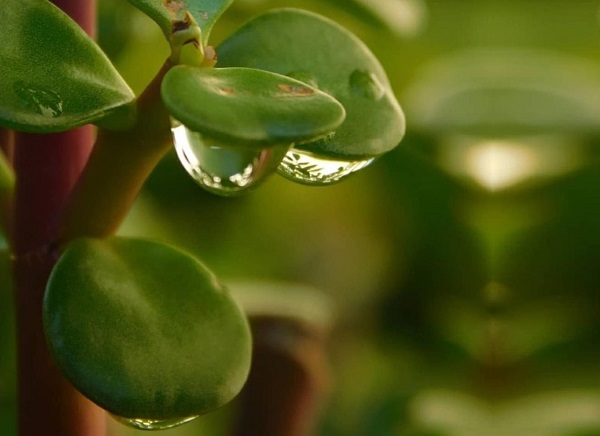
Even easy succulents for beginners require some basic care. All the succulents on this list need:
- Fast-draining succulent soil
- Water only when the soil is dry — then water thoroughly
- Ample light, though the lighting varies between varieties
- Favorable climate conditions — or overwintering indoors if your climate is too cold
Each of the succulents on this list grows happily in the same succulent soil and requires the same approach to watering. Each needs light, though some thrive in full sun, and others prefer plenty of shade. You’ll find this information specified in each description. Unless otherwise noted in the description, protect each of these succulents from a hard frost. And that’s it!
Crassula Ovata
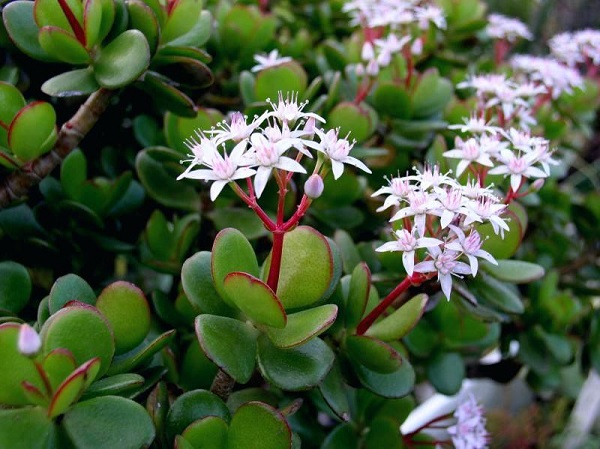
Crassula ovata, or the jade plant, is one of the most loved succulents around the world. Dark green, oval leaves are born on semi-woody stems. This easy succulent will thrive in full shade to full sun, indoors or out. In ample light, the leaf margins turn red, and it blooms in spring, forming clusters of bright, starry flowers. These blooms attract bees and butterflies. In the ground in frost-free climates, or in large pots, Crassula ovata will grow up to 5-feet tall to form a well-branched, handsome shrub. In cold winter climates, bring your jade plant indoors until spring.
Protect your Crassula ovata from freezing, and water only when dry. It is easy to propagate by both stem cuttings and by individual leaves. This is a perfect succulent for beginners to start with. Learn more about Crassula here.
Aloe Vera
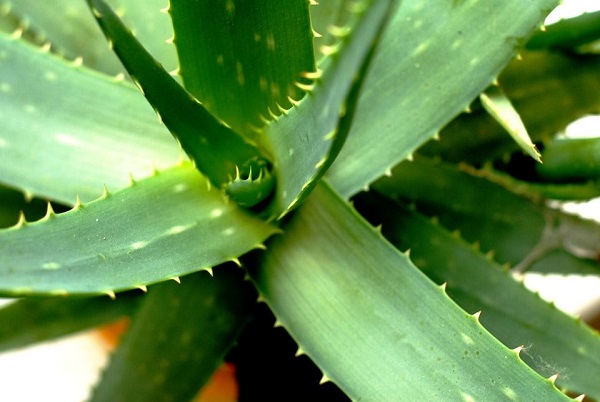
Aloe vera is cherished the world over for the many, medicinal uses of the clear gel inside its toothed leaves. It is said that Cleopatra used it daily as a beauty treatment for her skin. Use the gel for burns, rashes, stomach ailments and much more. Like the jade plant, Aloe vera will grow happily indoors or out. Provide full sun to part shade outdoors, or bright light indoors. Protect Aloe vera from freezing by overwintering indoors. Growing in the ground, this easy succulent reaches up to 3-feet tall, expanding by offsetsSucculent offsets are the baby succulents that form at the b.... Increase your Aloe collection by dividing the offsets from the mother plant. Summer blooms are tall, colorful and highly attractive to hummingbirds. Aloe vera is a great succulent for beginners to grow!
Learn more about growing Aloe varieties here.
Aeonium Kiwi
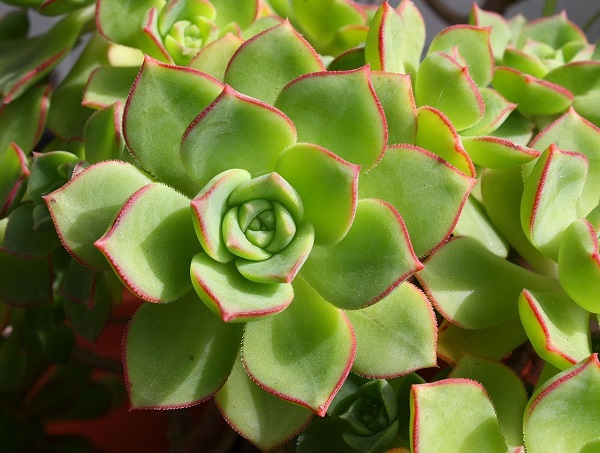
The lovely Aeonium Kiwi, with its flower-like foliage clusters, is an especially appealing and easy succulent for beginners to grow. The woody stems branch and curve, each ending in an attractive rosette. Grow Aeonium Kiwi in full sun to shade, but provide shade when temps are routinely in the high 80s F (26+ C) or above. In full sun, Aeonium Kiwi develops yellow and pink flush to its leaves that further enhance the floral appeal. Propagate via stem cuttings to increase your collection. Overwinter indoors where winters are cold. Where summers are hot, your Aeonium Kiwi may go dormant. Just stop watering until you see signs of new growth, then resume watering. Easy!
Learn more about growing different varieties of Aeonium here.
Portulacaria afra
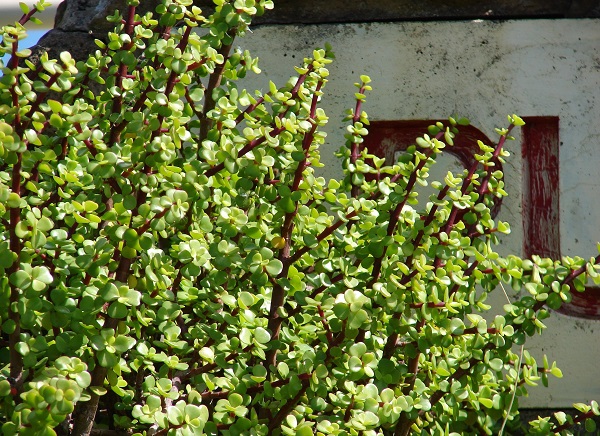
Portulacaria afra is commonly called elephant food plant. Huge stands grow across Africa, where elephants eat, break and crush the plants — thereby causing more to grow. Small green leaves cluster along straight, burgundy succulent stems. The soft wooded stems can grow up to 30 feet tall when it is grown in the ground in a mild winter climate. Portulacaria afra ‘Rainbow’ is a variegated form with a semi-trailing habit. Grow elephant food in full sun to semi-shade, in the ground or in containers. The strong, vertical lines add wonderful texture to mixed succulent containers. Protect from freezing by overwintering indoors. Portulacaria afra is an easy succulent for beginners, and perfect for learning how to prune. Propagate by stem cuttings or individual leaves.
To learn more about Portulacaria afra, click here.
Graptopetalum paraguayense
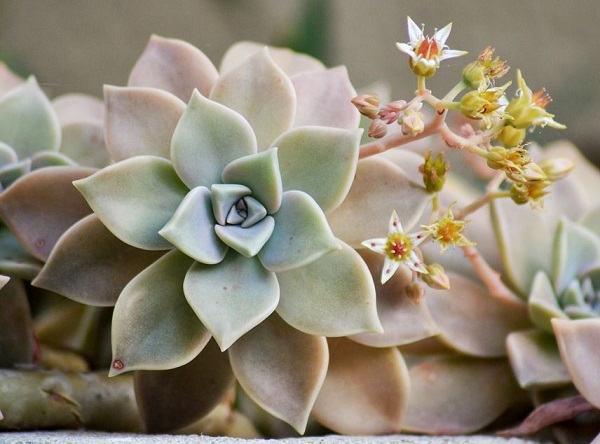
The graceful Graptopetalum paraguayense, or ghost plant, is a fast-growing and easy succulent for beginners to grow. Silvery white leaves develop an opalescent look with blue and pink tones, leading to a common name of mother of pearl plant. The leaves for flower-like rosettes at the end of semi-woody, curling stems. The rosettes tumble over the edge of a container for a trailing effect. The ghost plant grows up to 1 foot tall and will trail 3 feet long. Grow in full sun to partial shade, and protect from freezing. Delicate sprays of starry blooms form in spring, beckoning to bees and butterflies. Propagate Graptopetalum paraguayense by stem cuttings or leaf propagation.
For more information about Graptopetalum paragayense and hybrids, click here.
Sedum Autumn Joy
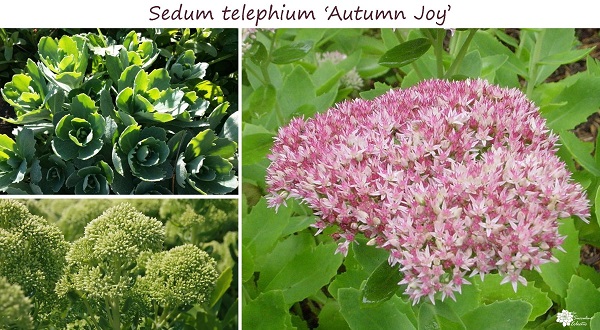
Sedum ‘Autumn Joy’ forms handsome mounds of foliage 1 foot tall and wide, and is a beautiful border plant. In summer, the plant is covered with tight buds that explode into bright pink blooms that last all autumn long. The flowers attract butterflies and make long-lasting cuts for the vase. Unlike others on this list, Sedum Autumn Joy is hardy to zone 4 (-30°F / -34° C). This variety is a snap to propagate via stem cuttings. Grow this easy succulent in full sun to light shade.
To learn more about sedum, click here.
Faucaria tigrina ‘Tiger Jaws’
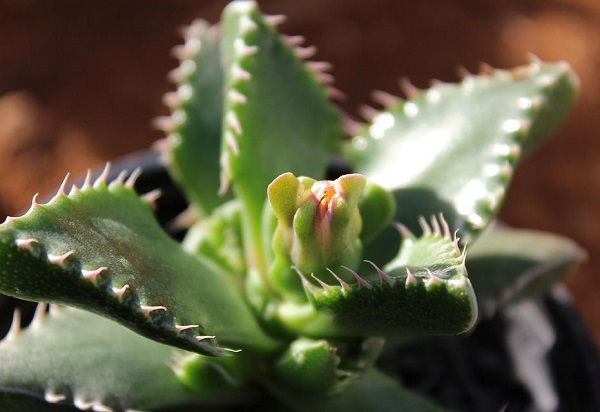
The fierce-looking “teeth” of Faucaria tigrina that give it the name ‘Tiger Jaws’ are soft and flexible. Bright yellow blooms that look like fringed daisies cover the plant for months at a time. Triangular leaves are chubby and wedge-shaped, with pairs facing each other across the stem. In time, clusters of Tiger Jaws will tumble over the side of its container. Propagate by cuttings to increase your collection. Grow this charmer in partial shade outdoors or bright light indoors. Faucaria makes an easy succulent for beginners to grow indoors year round, where its sensitivity to cold will not be a problem.
Kalanchoe blossfeldiana
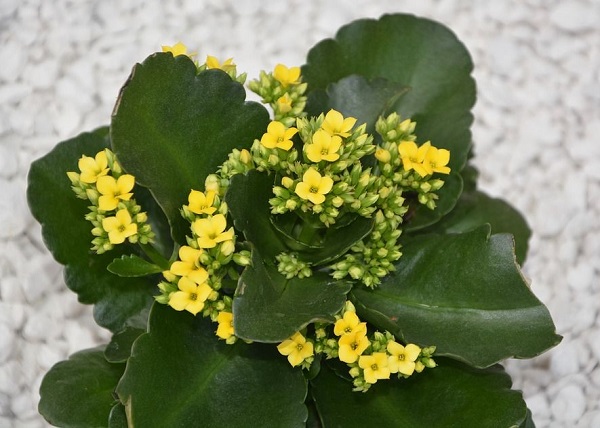
You have surely seen the neon blooms of Kalanchoe blossfeldiana at your local big box store or grocery store. The deep, green leaves are gently scalloped along the edge, and make a perfect frame for the dazzling blooms. Also known as Flaming Katy, you’ll find varieties that flower in every shade of yellow, pink, red, orange, peach and white, some with double flower forms. The flowers last for months, and it’s pretty easy to get Kalanchoe blossfeldiana to rebloom. This is a super easy succulent for beginners to grow in bright light indoors or partial shade outside. Quick to propagate by stem cuttings. Protect from freezing, or just grow indoors year round!
Learn about the varied Kalanchoe genus here.
Echeveria Perle von Nurnberg
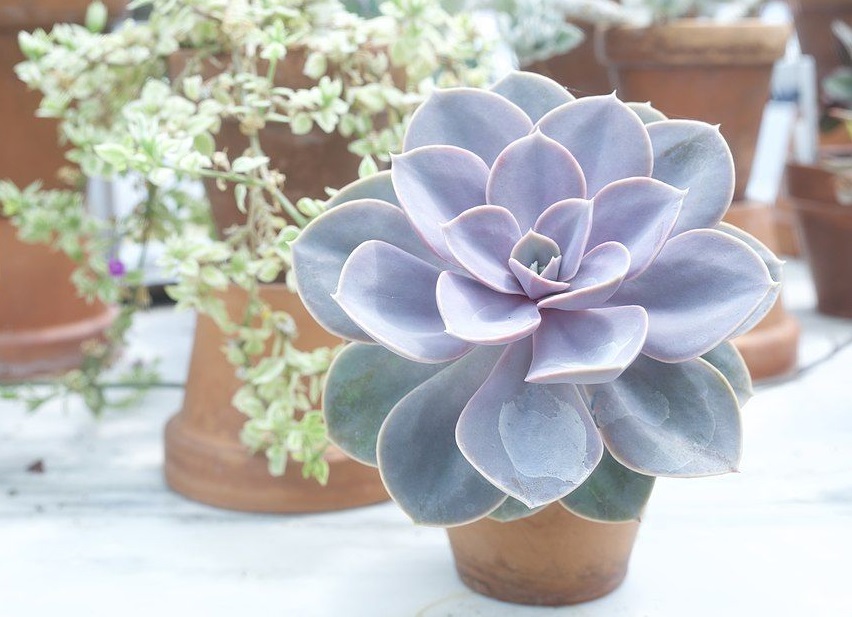
Echeveria Perle von Nurnberg is a stunning rosette succulent in lavender pink. Beloved for its flower-like appearance, all echeveria are easy to grow. Perle von Nurnberg is as tough and easy to please as it is lovely. An easy succulent for beginners to grow, it performs best outdoors in full sun to light shade. Its coloring deepens and intensifies in full sun. The rosettes will grow to 6-inches across and propagates readily by stem cutting or individual leaves. The leaves of PVN are covered with a soft sheen of epicuticular wax. Arching stems of pink and yellow blooms form in summer and are highly attractive to hummingbirds. In cold winter climates, overwinter echeveria indoors.
Learn more about growing echeveria by clicking here.
Sempervivum
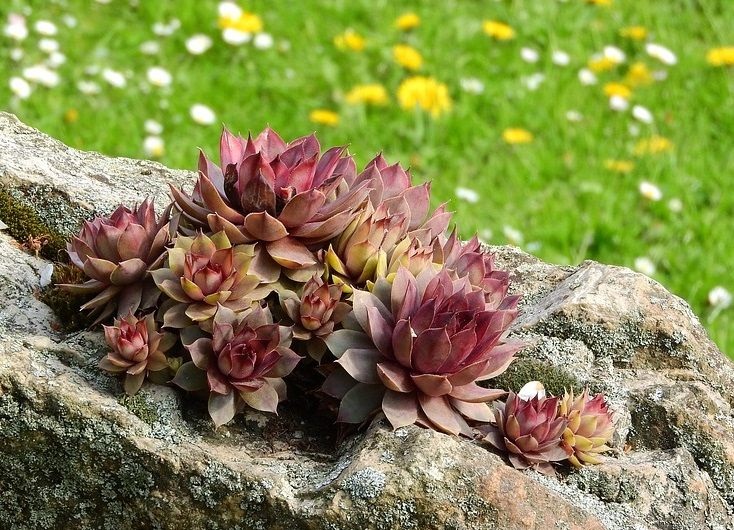
Sempervivum is an easy succulent for beginners to grow and fall in love with. It forms clusters of rosettes connected by short stems, leading to the common name hens and chicks. Sempervivum thrives outdoors year round even in frozen winter climates. All varieties are winter hardy at least to zone 5 (-15°F / -26° C) and many to zone 3 or 4. Grow in full sun to partial shade in rock gardens or spilling over the side of containers. Although the name means “always living”, sempervivum are monocarpic. Because it produces so many offsets to take the place of each parent, the colony remains lush and full.
Learn all about growing sempervivum here.
Haworthia fasciata
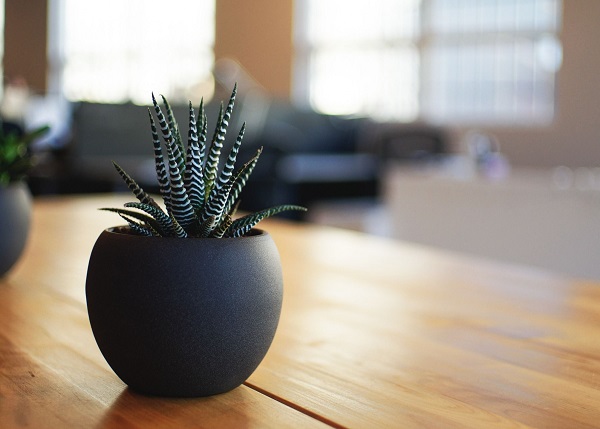
The striking Haworthia fasciata is often called the zebra plant for the bands of bright white tubercles on its dark green leaves. This coloring and the overall spiky shape give this plant an edgy vibe that is a welcome addition to home decor and mixed succulent plantings. Grow Haworthia fasciata indoors year-round in bright light or partial shade outdoors. Protect it from frost or freeze. It is a slow grower that propagates by offsets. Not just an easy succulent for beginners to grow, it is an easy favorite.
Learn all about growing Haworthia here.
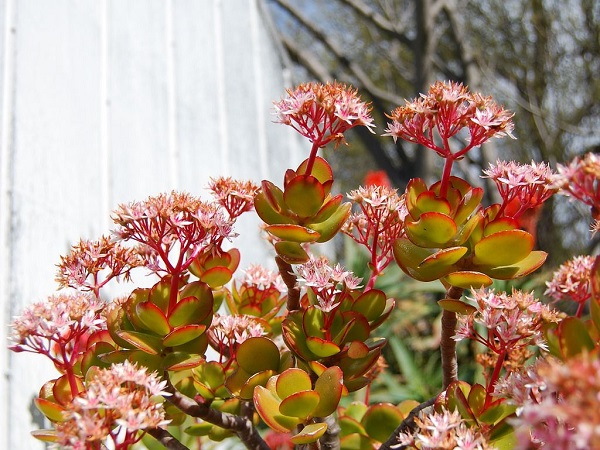
Whether you are just starting on your succulent journey, want to gift an easy succulent to a friend, or just want to enjoy a sure-fire plant, get to know the varieties on this list. Each is as easy to love as it is to grow. It simplifies a lot of facets of succulent care when you start with a plant that is easy to care for. The Crassula ovata in the image above is a hybrid called Hummel’s Sunset with vivid coloring in full sun. This is a great variety for learning about succulent stress.
If you have any questions or want to nominate your own easy succulent to grow, please just leave a comment! I love hearing from you will get right back to you.
P.S. For more succulent care information, subscribe and enjoy my FREE course, 7 Steps to Succulent Success! Thanks so much!
P.P.S. Why not join my Facebook Group for succulent lovers? We talk about succulent care, propagation, succulent identification, and design. It’s a warm and welcoming group that would love to meet you!
